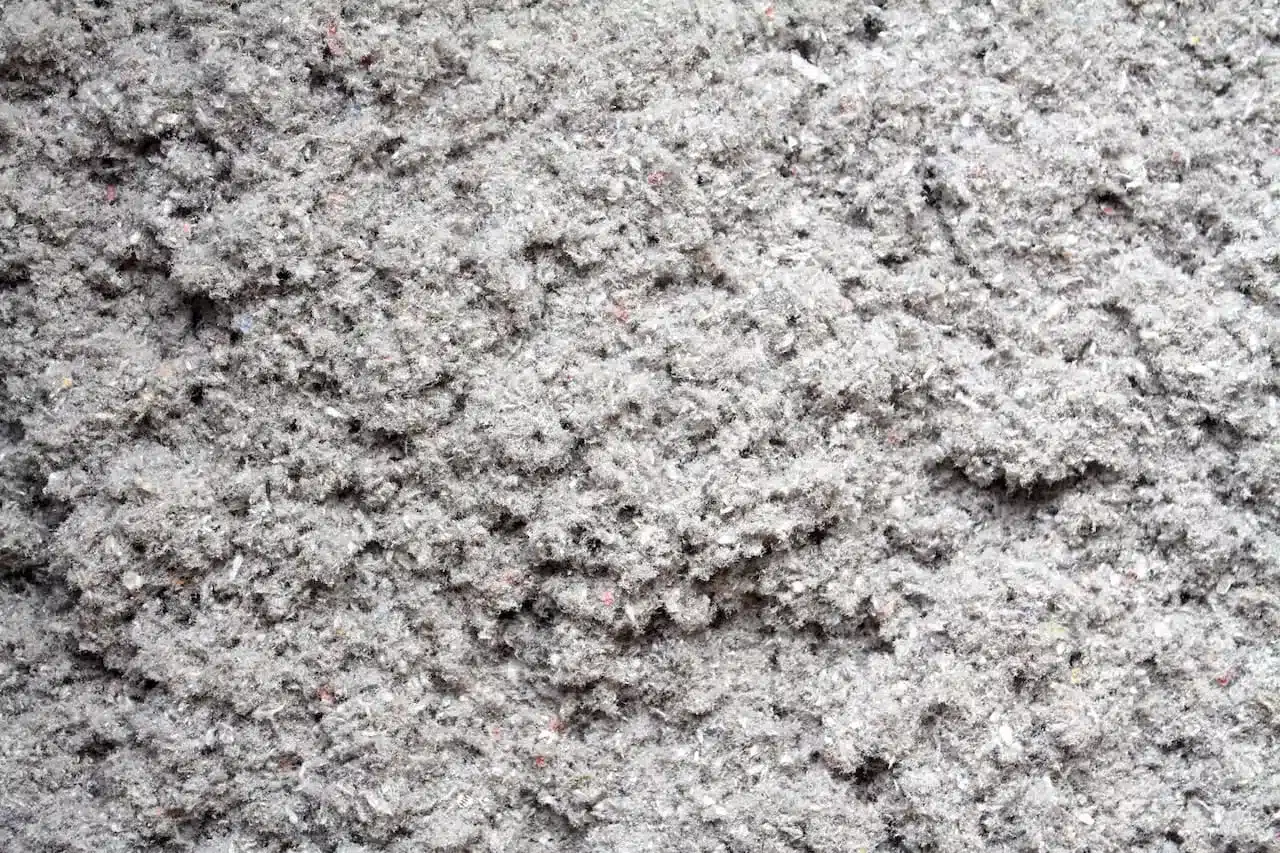Blown-in insulation is a popular choice for homeowners and business owners in Pensacola, Milton, Pace, Navarre, Crestview, Gulf Breeze, Foley, and surrounding areas seeking energy efficiency, comfort, and cost savings. Understanding the chemicals in blown-in insulation can help you decide which materials best suit your property’s needs. Whether insulating a roof, upgrading your attic, or even removing outdated insulation, it’s essential to know what’s behind the materials used to maintain the safety and indoor air quality of your home or office.
In this post, we will explore the different types of blown-in insulation, what chemicals are in them, and the impact these chemicals may have on your health and property.
Types of Blown-In Insulation Materials
Blown-in insulation is often made of one of three primary materials: cellulose, fiberglass, or mineral wool. Each of these materials has a distinct chemical composition and comes with specific benefits and considerations:
1. Cellulose Blown-In Insulation
Cellulose is one of the most eco-friendly options. It is primarily made from recycled paper products such as newspapers and cardboard. Manufacturers add fire retardants and other chemicals to make cellulose suitable for insulation.
- Chemicals in Cellulose Insulation:
- Boric Acid: A common fire retardant and pest deterrent.
- Ammonium Sulfate: Used as an alternative fire retardant that helps control mold.
- Sodium Borate: Another fire retardant that offers some mold growth resistance.
These additives help improve the fire resistance of cellulose insulation and protect it against pests and mold. However, some people are sensitive to the dust produced during installation, which may irritate the eyes or respiratory system.
2. Fiberglass Blown-In Insulation
Fiberglass insulation is another common type, and it is made from spun glass fibers. This material is light, inexpensive, and effective at reducing heat transfer.
- Chemicals in Fiberglass Insulation:
- Glass Fibers: The primary component is melted sand, recycled glass, and other minerals.
- Phenol Formaldehyde Resin: Used as a binder to hold the glass fibers together. While phenol formaldehyde can release formaldehyde gas when heated, most modern fiberglass manufacturers have reduced or eliminated formaldehyde from their products.
- Silane: A coupling agent used to enhance the strength and stability of fiberglass.
Though fiberglass does not readily ignite, safety precautions are still necessary when handling this material. Fiberglass fibers can cause skin, eye, and respiratory irritation, especially during installation.
3. Mineral Wool Blown-In Insulation
Mineral wool, also known as rock wool or slag wool, is another option for blown-in insulation. It is made by melting rocks or industrial byproducts and spinning them into fibers.
- Chemicals in Mineral Wool Insulation:
- Basalt Rock and Slag: The primary components used to create fibers.
- Binders and Oils: Minimal amounts of binding agents, such as phenolic resins, stabilize the fibers and reduce dust.
- Silicate and Alkaline Additives: These may be added to improve the insulation’s fire resistance and durability.
Mineral wool is known for its fire-resistant properties and its moisture resistance. However, the fibers can irritate if inhaled or come into contact with the skin during installation.
Health and Environmental Impact of Chemicals in Blown-In Insulation
Understanding the chemicals in blown-in insulation can help address concerns about health and safety. Each material has a unique chemical makeup that contributes to its insulating properties but may also come with considerations:
Cellulose Insulation: Health and Environmental Considerations
The fire retardants used in cellulose—mainly boric acid and ammonium sulfate—are considered low-toxicity. They help prevent mold and pests from compromising the insulation. Overall, cellulose is one of the safer choices for indoor air quality, as it contains fewer volatile organic compounds (VOCs) than synthetic insulation options.
One potential downside of cellulose is the dust produced during installation, which can cause temporary irritation. To prevent respiratory issues, cellulose should be installed with proper protective equipment, such as masks.
Fiberglass Insulation: Health and Environmental Considerations
Fiberglass insulation is effective and widely used, but it can present some health risks if not handled properly. The fibers cause skin irritation, and inhaling fiberglass dust can lead to respiratory problems. Although most fiberglass insulation now uses formaldehyde-free binders, minor concerns about VOCs from other additives may still exist.
In addition, the production process for fiberglass insulation requires significant energy, although most manufacturers now use a considerable portion of recycled glass, reducing the environmental impact.
Mineral Wool Insulation: Health and Environmental Considerations
Mineral wool insulation is highly resistant to fire, which is partly due to its chemical makeup. The presence of natural stone and recycled industrial byproducts makes it a popular choice for both residential and commercial applications.
Like fiberglass, mineral wool fibers can be irritating if they come into contact with skin or are inhaled. However, mineral wool does not contain formaldehyde-based binders, making it a lower-VOC option in comparison to older forms of fiberglass insulation.
Benefits of Blown-In Insulation for Homes and Businesses
The choice of blown-in insulation depends mainly on your specific needs and concerns, whether they relate to energy efficiency, safety, or air quality. Here are some key benefits of each type:
1. Improved Energy Efficiency
Blown-in insulation is highly effective at filling gaps, cracks, and hard-to-reach areas, leading to superior energy efficiency. Whether you choose cellulose, fiberglass, or mineral wool, the material will help regulate indoor temperatures, which can lead to reduced heating and cooling bills.
2. Noise Reduction
Fiberglass and mineral wool insulation both offer excellent noise-reduction properties. This benefits those living in noisy neighborhoods or working in commercial spaces where sound control is essential.
3. Eco-Friendly Options
Cellulose insulation is an environmentally friendly option, using up to 85% recycled paper content. Mineral wool also incorporates recycled industrial byproducts, making it an attractive choice for those looking to reduce their carbon footprint.
How Blown-In Insulation Compares to Spray Foam Insulation
Blown-in insulation is often compared to spray foam insulation when deciding on the best material for a project. Here’s how blown-in insulation measures up:
1. Cost
Blown-in insulation is generally less expensive than spray foam insulation. Homeowners looking for an affordable solution often choose cellulose or fiberglass blown-in insulation, which provides significant savings while still improving energy efficiency.
2. Application Process
Spray foam is a versatile and practical solution but requires a more complex application process involving specialized equipment. Blown-in insulation, on the other hand, can be installed more quickly, making it a popular choice for attics and areas with accessible cavities.
3. Insulation Performance
Spray foam insulation has a higher R-value per inch than blown-in materials, providing better thermal resistance. However, blown-in insulation still offers excellent insulating properties and is often sufficient for the needs of many homes and businesses.
Is Blown-In Insulation Right for You?
Blown-in insulation is a versatile and cost-effective choice for residential and commercial buildings. By understanding the chemicals involved and the benefits of each type, you can make a more informed decision that suits your property’s needs.
- For homeowners seeking an affordable and eco-friendly solution, cellulose blown-in insulation may be ideal.
- Mineral wool may offer the best benefits for commercial properties looking for fire-resistant and moisture-resistant insulation.
- Fiberglass insulation is a tried-and-true option for those prioritizing cost and widespread Availability.
Ready to Improve Your Home’s Comfort and Efficiency?
If you’re ready to take the next step toward a more comfortable and energy-efficient home or business, blown-in insulation is a great solution. Prestige Insulation Solutions offers reliable, high-quality insulation services for homeowners and businesses in Pensacola, Milton, Pace, Navarre, Crestview, Gulf Breeze, Foley, and nearby areas. We specialize in blown-in, spray foam, and more—all tailored to meet your specific needs.
Contact us today to learn more or schedule a consultation! You can reach us by phone at (850) 429-4969, email us at [email protected], or visit our website at https://prestigeinsulationsolutions.com/. Let’s work together to keep your property comfortable and efficient year-round.
FREQUENTLY ASKED QUESTIONS
1. What is blown-in insulation made of?
Blown-in insulation is made from cellulose, fiberglass, or mineral wool, each with distinct chemical additives for fire resistance and insulation performance.
2. Is blown-in insulation safe for my home?
Yes, blown-in insulation is generally safe. Proper installation and protective gear help minimize any potential irritation from the chemicals or fibers.
3. How does cellulose insulation compare to fiberglass?
Cellulose is more eco-friendly and made from recycled materials, while fiberglass is widely available and effective but may cause skin or respiratory irritation.
4. Can blown-in insulation improve energy efficiency?
Blown-in insulation effectively fills gaps and helps regulate indoor temperatures, which can lead to lower heating and cooling costs.



